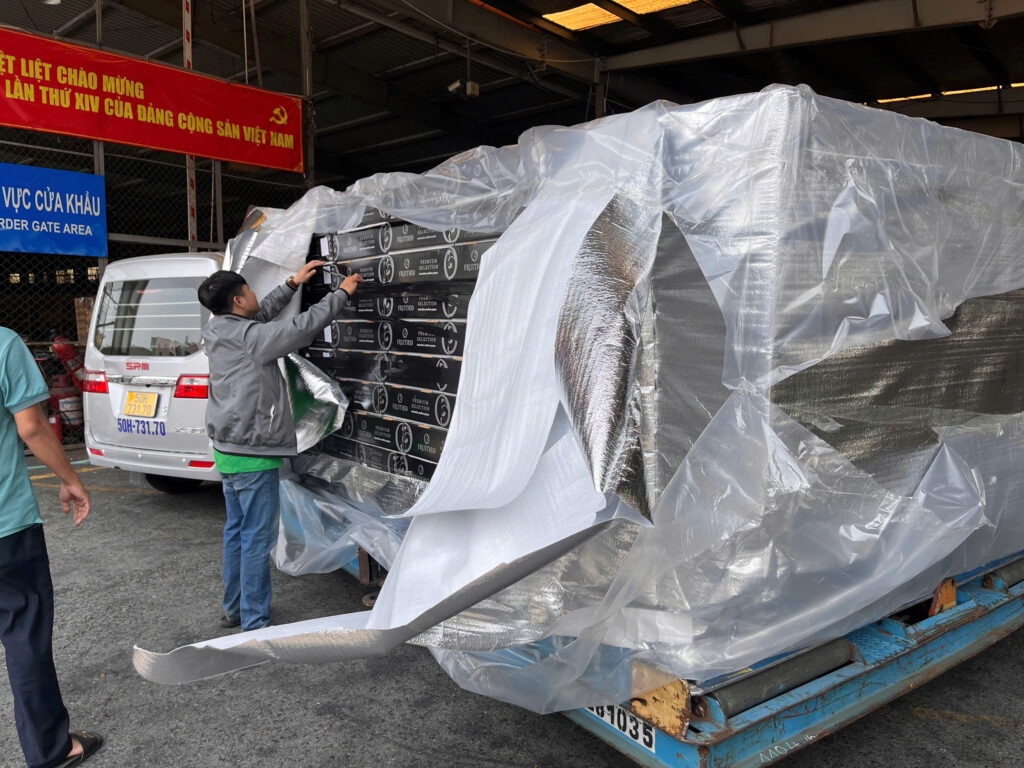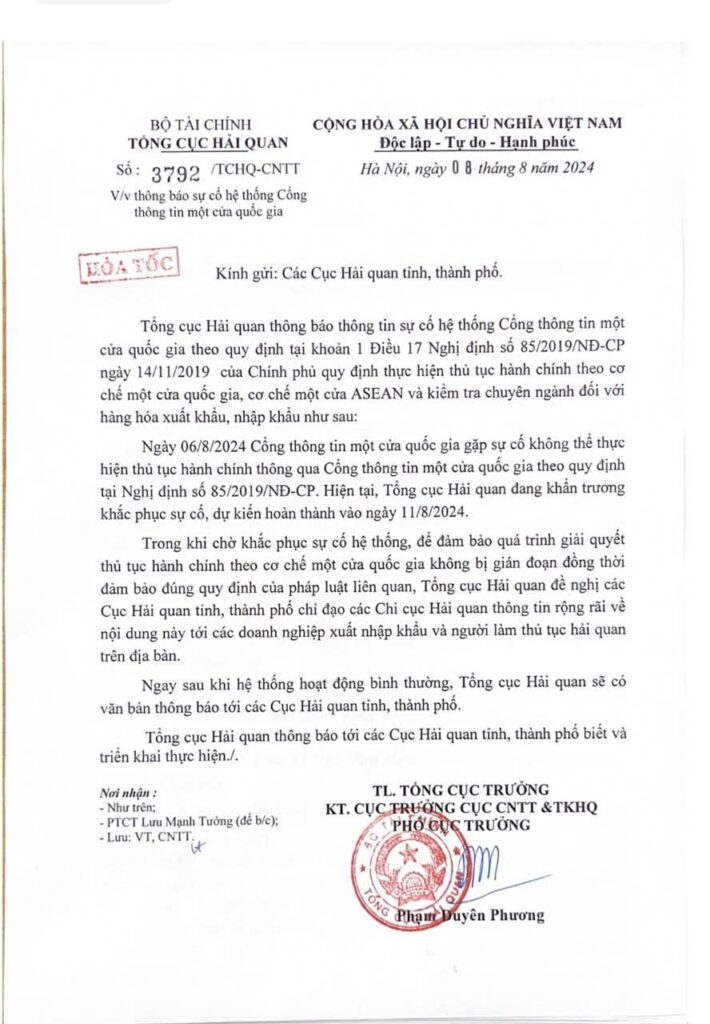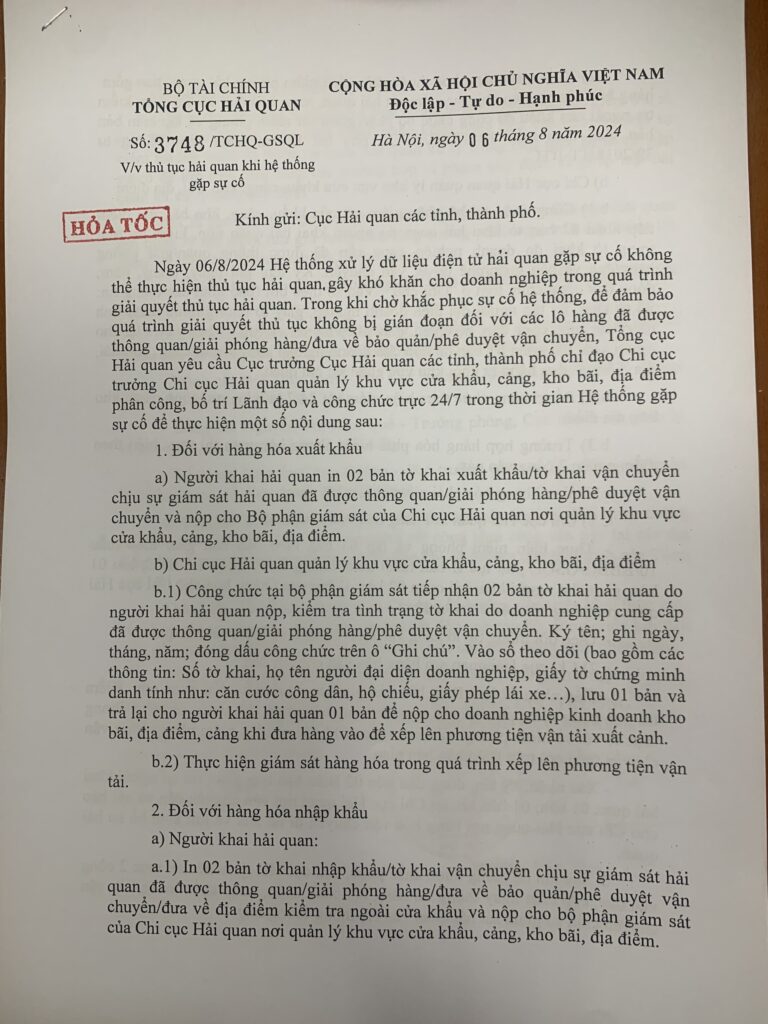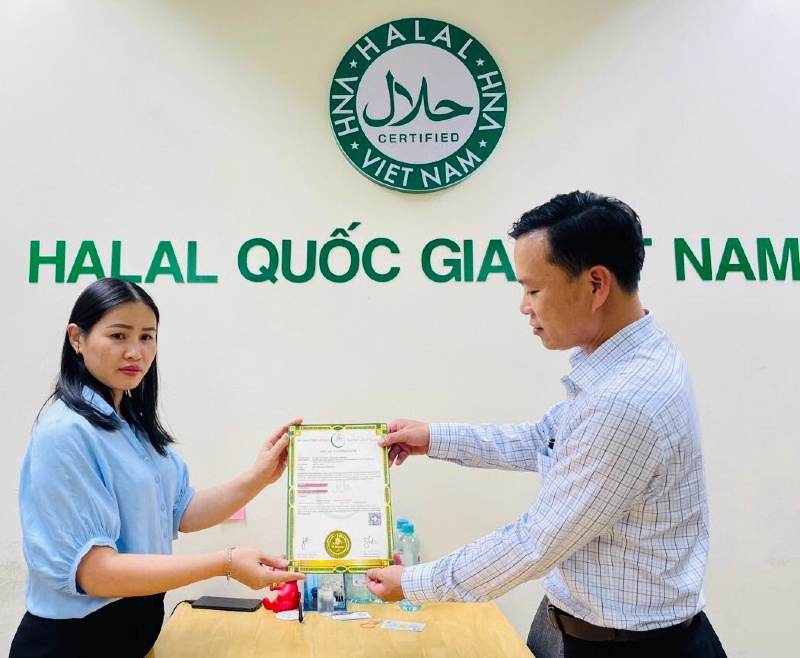In recent years, Vietnam has achieved many important achievements in economic development thanks to promoting openness, integrating into the world economy, and actively participating in a network of multi-layered free trade agreements. hiccups.
To date, Vietnam has participated in and is negotiating 17 free trade agreements, of which 10 agreements have taken effect and are implementing commitments, 3 agreements have been signed or negotiations have ended but have not yet been completed. takes effect, 4 agreements are under negotiation. This article analyzes the impact of new generation free trade agreements on the Vietnamese economy and recommends solutions to take advantage of the opportunities that these agreements bring as well as limit negative impacts. during the integration process.
New generation free trade agreements
The term "new generation free trade agreement (FTA)" is used to refer to FTAs with extensive and comprehensive commitments, including commitments on free trade in goods and services such as “Traditional FTA”; deepest level of commitment (tax cuts almost to 0%, possible roadmap); has a strict enforcement mechanism and moreover, it covers areas considered "non-traditional" such as: Labor, environment, state-owned enterprises, government procurement, transparency, mechanisms Resolve investment disputes...
Vietnam has currently participated in a number of new generation FTAs, notably the Comprehensive and Progressive Agreement for Trans-Pacific Partnership (CPTPP) and the Free Trade Agreement between Vietnam and the European Union. (EU) – EVFTA, specifically:
– CPTPP Agreement: Countries commit to eliminate import taxes on 65-95% of tariff lines and completely eliminate 97-100% of tariff lines as soon as the Agreement takes effect. The remaining items will have a roadmap to eliminate tariffs. within 5-10 years.
In CPTPP, Vietnam commits to eliminating a high number of tariff lines, accordingly: 65.8% of tariff lines have a tax rate of 0% as soon as the Agreement takes effect; 86.5% number of tariff lines with tax rate 0% in the 4th year when the Agreement takes effect; 97.8% number of tariff lines with tax rate 0% in the 11th year when the Agreement takes effect. Regarding export taxes, Vietnam commits to eliminating the majority of products currently subject to export taxes according to a roadmap of 5-15 years after the Agreement takes effect.
– EVFTA Agreement: The main contents of the Agreement include: Trade in goods, trade in services, rules of origin, customs and trade facilitation; Food hygiene and safety measures and animal and plant quarantine, technical barriers in trade, investment, trade defense, competition, intellectual property, sustainable development; legal issues, cooperation and capacity building.
In the EVFTA, Vietnam and the EU commit to eliminate import taxes on 99% tariff lines within a period of 7 years for the EU and 10 years for Vietnam. Accordingly, Vietnam commits to eliminate tariffs as soon as the Agreement takes effect with 48.5% number of tariff lines, after 3 years it will be 58.7% number of tariff lines, after 5 years it will be 79.6% number of tariff lines, then 7 years is 91.8% number of tax lines and after 10 years is 98.3% number of tax lines.
Regarding export taxes, Vietnam commits to eliminating most taxes on exporting goods to the EU with a roadmap of up to 15 years.
Positive impact on Vietnam's economy
Signing and participating in new generation FTAs will have a great impact on the Vietnamese economy through expanding the import-export market, accordingly, import-export turnover to partner countries will increase, strengthening strengthening traditional markets, opening up many potential markets on the basis of promoting relationships with important economic strategic partners. Specifically:
The first, Promote export activities: Trade liberalization in general and new generation FTAs in particular have an impact on promoting export activities. The regulations in these FTAs force member economies, including Vietnam, to restructure, open new markets and create attraction for goods. In the coming time, when the implementation of tariff reduction under FTAs enters a deep reduction phase, Vietnam's exports are expected to continue to grow strongly due to: (i) The efforts of ministries, relevant industries in striving to achieve the export growth target of 7-8% set by the National Assembly; (ii) When tax rates decrease, especially for input raw materials for export production such as: Textile and garment raw materials, plastics, corn, rubber...; (iii) The implementation of the CPTPP and EVFTA Agreements will be a driving force for Vietnam's exports in the coming time.
In particular, the commitment to open markets in the EVFTA will help further expand the export market, especially products in which both have advantages such as agricultural and aquatic products, furniture, textiles, garments, and footwear... of Vietnam, machinery, equipment, cars, motorbikes, and alcoholic beverages of the EU.
Monday, for domestic production: Participating in new generation FTAs will cause many items used as input materials for domestic production to have lower prices, thus reducing production costs of businesses. From there, commodity prices will be more competitive than imported goods, promoting domestic production for export. The tariff reduction will cause more imported goods from other countries, especially EU countries, to enter Vietnam due to low prices, rich and diverse designs, and have a positive impact on domestic production.
Tuesday, for the business environment: Participating in new generation FTAs such as EVFTA, CPTPP on institutional issues, legal policies behind the border... will create conditions and motivation for opportunities to change and improve. policies and laws are more transparent, favorable and more consistent with international practices. New generation FTAs will help Vietnam further consolidate the state apparatus, in the direction of promoting administrative reform, strengthening the responsibility and discipline of officials, thereby supporting the process of model innovation. growth model and economic restructuring of Vietnam.
Wednesday, For attracting foreign investment (FDI): In the new generation FTAs, there are commitments to fair treatment between domestic and foreign investors in the establishment, acquisition, expansion, administer, deploy, operate, and do business. That will create opportunities for foreign investors to access the Vietnamese market faster. New generation FTAs also have regulations on sustainable development, helping to limit outdated technologies and promote the development of technologies that use renewable energy sources and are environmentally friendly. These trends bring many benefits to the Vietnamese economy and to Vietnamese businesses.
In the coming period, when new generation FTAs take effect, the removal of investment and service restrictions, the opening of the Government procurement market, financial services... will open up great opportunities for investors. with Vietnam's investment sector.
With the regulations in new generation FTAs, investors will invest deeply in the Vietnamese market, therefore, the quality of foreign investment will improve, creating motivation for economic development. For example, EVFTA will promote high-quality investors from the EU and other partners into Vietnam. Up to now, EU investors have been present in most important economic sectors, focusing most on industry, construction and some service industries.
Some challenges arise
Besides positive impacts, the implementation of new generation FTAs poses a number of challenges for the Vietnamese economy, specifically:
The first, challenges of perfecting institutions and creating a healthy competitive environment. The process of implementing international integration commitments has had profound impacts on the Vietnamese economy. The work of building institutions and policies has gradually been completed, helping the Vietnamese economy have clear changes. International integration contributes to expanding markets and increasing competitive advantages for Vietnam's exports compared to other countries in the region; Thereby, the structure of export goods has changed qualitatively.
However, compared to international practices, Vietnam's economic institutions and business investment environment still have large gaps. If we do not make efforts to reform and perfect market economic institutions, this will be a barrier to the flow of quality foreign investment capital into Vietnam, and will not improve the competitiveness of goods and products. Vietnam in international trade.
Monday, The competitiveness of the Vietnamese economy, businesses as well as each product is currently low. Reducing import taxes according to the committed roadmap leads to domestically produced goods facing strong competition from imported goods, and at the same time domestic manufacturing industries are directly affected by the above fluctuations. international commodity market. On the other hand, most of Vietnam's export products are mainly processed and assembled, input materials and accessories are mainly imported; The rate of enterprises investing in raw material production is low, while the rate of product localization is slowly improving...
Tuesday, Regarding imports, despite signing FTAs with many partners, in the short term, Vietnam's imports still depend heavily on traditional markets (such as China), due to the level of deep tax commitments as well as Favorable geographical location will make the problem of trade deficit from China unable to be completely resolved. Besides, tax cuts also create a lot of pressure on the operations of domestic businesses.
Wednesday, There are a number of issues facing FDI capital flows: (i) FDI's contribution to improving industrial capacity is still limited; (ii) The connection between FDI enterprises and domestic enterprises is still weak; (iii) FDI enterprises mainly operate in the field of assembly and processing, which is labor intensive and has little ability to create technological spillover effects; (iv) Although the legal framework and policies for opening FDI and international economic integration have improved, there are still many limitations in management, leading to problems such as environmental pollution, transfer pricing, and evasion. tax…; (iv) Capital flows that are more interconnected internationally also increase the risk of macroeconomic instability in the context of volatile world and regional economies, which also poses challenges in building and implement macroeconomic policies.
Thursday, the proportion of state budget revenue from import and export tax on total state budget revenue tends to decrease, due to preferential import tax rates and special incentives on the deep cut roadmap.
Friday, The domestic financial services market is not really developed. Opening the market as committed has created fierce competitive pressure on all three levels, including: Competition between domestic and foreign products; competition between domestic enterprises and foreign enterprises and competition between governments in terms of institutions and business environment.
Saturday, Staff qualifications and capacity of state management agencies need to continue to be strengthened to meet management requirements, market supervision, reform of administrative procedures, and limit trade fraud...
Some recommendations
To be able to take advantage of opportunities and limit challenges in implementing commitments of new generation FTAs, in the coming time, it is necessary to focus on the following solutions:
For the State
– Continue to improve institutions and policies associated with the implementation of integration commitments, in order to improve the efficiency of mobilizing and using investment capital, improving the investment and business environment; Change FDI attraction policy towards selecting projects and partners that suit Vietnam's development requirements; Focus on sustainable development to minimize negative impacts; Strengthen control of FDI enterprises, especially enterprises that often report losses to avoid transfer pricing phenomena.
– Continue to build and improve the legal and policy system to fully implement international commitments according to the roadmap. In amending and supplementing policies, it is necessary to ensure uniformity and efficiency, maintain a stable investment and business environment, and not cause disturbance or affect the interests of operating businesses. as well as new investors. Promptly review, amend, adjust and abolish regulations inconsistent with international commitments in order to fully implement obligations in bilateral, multilateral and regional international treaties of which Vietnam is a member. member.
– Promote administrative reform in all fields, especially the fields of investment, construction, land, taxes, customs, import and export in accordance with international economic integration commitments; Closely monitor the issuance and application of business licenses and conditions; Promote the improvement of financial institutions, ensuring uniformity, openness, transparency, stability and compliance with practical requirements set forth in the country's socio-economic development process and commitments. international connection.
– Promote propaganda and dissemination of commitments and agreements that Vietnam participates in to each industry, locality, business and people so that relevant subjects can effectively implement the commitments; Complete trade policies to suit Vietnam's conditions and not conflict with commitments in FTAs that Vietnam has and will participate in.
– Develop, plan, and synchronize supporting industries to identify supporting industries in accordance with Vietnam's Industrial Development Strategy, ensuring effectiveness in policy implementation and improving capacity. competition of Vietnamese industries in the context of integration.
For associations
– Continue to deploy activities to provide and advise businesses on business law, knowledge of international economic integration, as well as experience in dealing with international lawsuits and trade barriers. of export markets; Organize many trade and investment promotion programs according to specific markets, industries and business fields to improve access to domestic and foreign markets.
– Continue to promote the role of bridge between businesses and management agencies, facilitating connections and exchanges between member businesses; Strengthen the dissemination of integration information about the laws of other countries, intellectual property, industrial property, quality management, rules of origin... for member businesses, supporting businesses to build trade. signal.
For Businesses
– Strengthen links with each other, create investment opportunities to increase competitive strength; Proactively build production and business capacity, improve product quality and design to enhance competitiveness and build brand; Increase investment in developing supporting industries, investing in raw material growing areas to minimize dependence on foreign suppliers for raw materials.
– Innovate corporate governance and information technology activities, improve product quality, and enhance brand promotion; Along with that, proactively build business strategies and develop production to be able to compete with goods from countries in the region, even in the domestic and export markets, and research to meet the requirements. criteria on rules of origin to enjoy preferential tariffs. Besides, businesses need to closely monitor information, commitment roadmaps... from there, give the right direction and build a reasonable business strategy. More importantly, the business community must have a roadmap to adapt and change appropriately. Because, if tariff barriers are completely removed and bring great economic benefits, then rules of origin emerge as a new barrier.
– There needs to be a mechanism to invest in human resources early, with a policy of adequate material and mental compensation for workers, especially highly skilled workers. This is investing in human resources to create competitive advantage when integrating. In addition, businesses need to innovate salary management mechanisms linked to labor productivity and business efficiency, encouraging workers to automatically improve their professional skills.
Reference documents:
- Ministry of Industry and Trade (2013), "National report serving trade review within the WTO framework", September 2013;
- Institute of Strategy and Financial Policy (2015), Vietnam Finance Book 2014-2015, Finance Publishing House;
- Department of International Cooperation, Ministry of Finance (2018), Ministerial-level scientific research project in 2017, "Implementing tariff commitments in free trade agreements in the period 2018-2022 and economic development branch";
- IBM Belgium, DMI, Ticon, TAC and research team (December 2009), “Economic Integration and Development in Vietnam”;
- Benedictis, LD & Taglioni, D. (2010), “The Gravity Model in International trade”, Report assessing the impact of FTAs on Vietnam's economy;
- Mutrap (2010, 2011), “Assessing the impact of FTA on Vietnam's economy”

Source: Financial magazine







